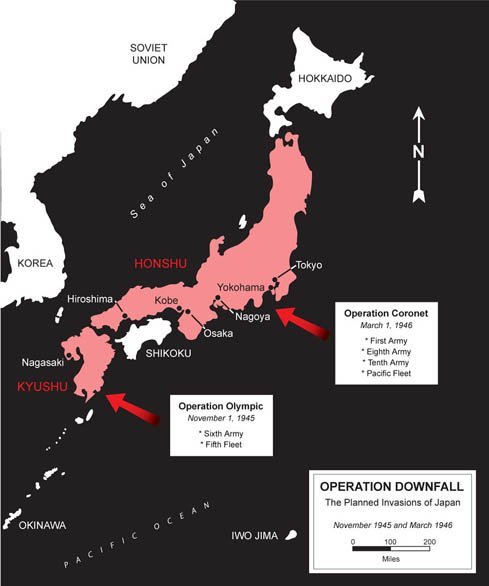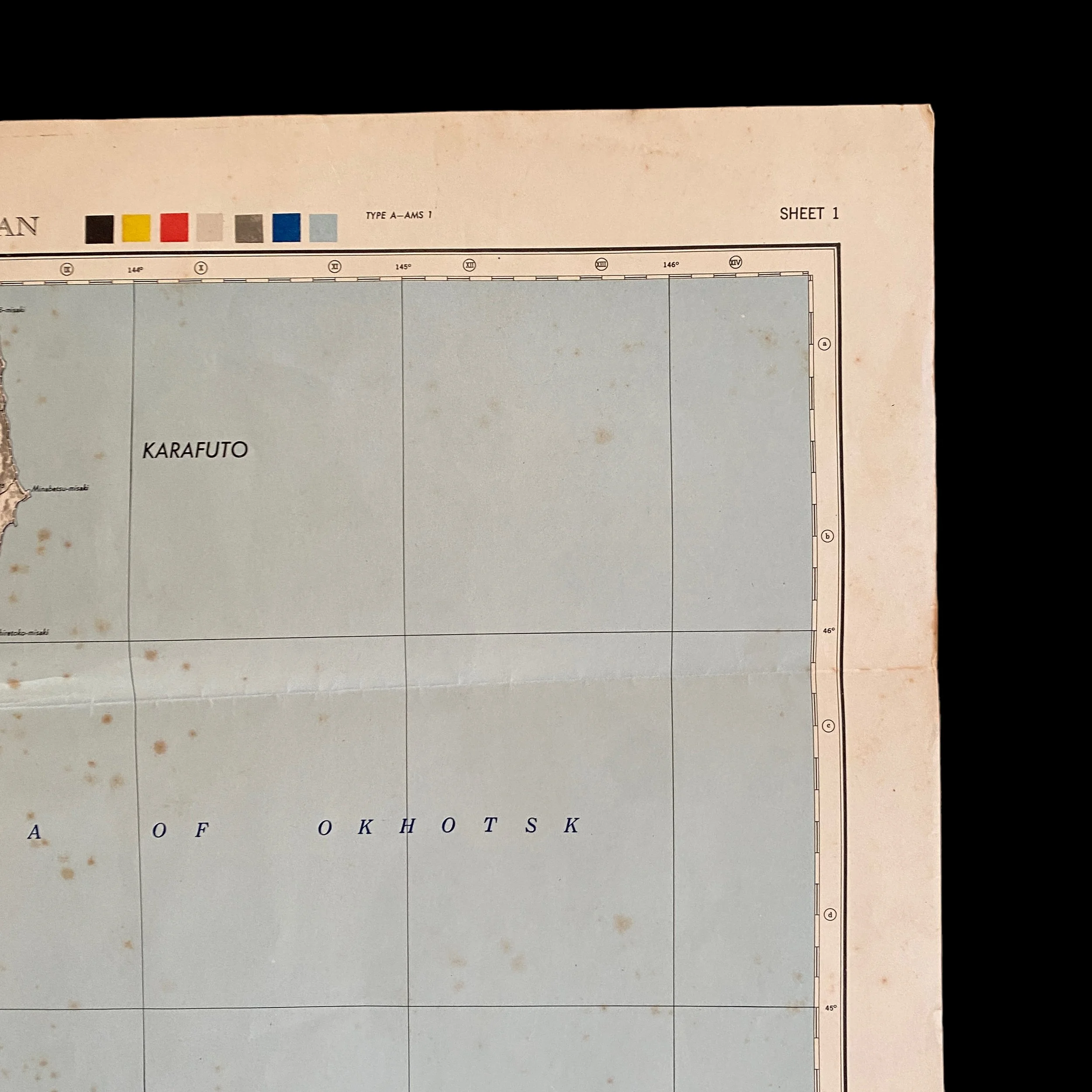RARE WWII 1945 Operation Coronet War Room Invasion of Japan Operation Downfall Planning Map*



























RARE WWII 1945 Operation Coronet War Room Invasion of Japan Operation Downfall Planning Map*
Comes with hand-signed C.O.A.
That's rare and museum-grade 1945 WWII Operation Coronet war room map was used for the strategic military planning of Operation Downfall. Operation Downfall was the proposed D-Day Allied plan for the invasion of the Japanese home islands near the end of World War II.
The planned operation was canceled when Japan surrendered following the atomic bombings of Hiroshima and Nagasaki. In early 1946 would come Operation Coronet, the planned invasion of the Kantō Plain, near Tokyo, on the main Japanese island of Honshu. Airbases on Kyūshū captured in Operation Olympic would allow land-based air support for Operation Coronet. If Downfall had taken place, it would have been the largest amphibious operation in history, surpassing D-Day. This war map is a very large in size and was printed in May 1945 (3 month prior to the two atomic bombs over the Japanese cities of Hiroshima and Nagasaki on 6 and 9 August 1945). This specific war room map was to be used in the second phase of Operation Coronet. This map shows an extremely detailed view of Tokyo and upper Japan and labels its strategically important large cities, roads, and trails.
Operation Coronet, the invasion of Honshu at the Kantō Plain south of the capital, was to begin on "Y-Day", which was tentatively scheduled for 1 March 1946. Coronet would have been even larger than Olympic, with up to 45 U.S. divisions assigned for both the initial landing and follow-up.(The Overlord invasion of Normandy, by comparison, deployed 12 divisions in the initial landings.) In the initial stage, the First Army would have invaded at Kujūkuri Beach, on the Bōsō Peninsula, while the Eighth Army invaded at Hiratsuka, on Sagami Bay; these armies would have comprised 25 divisions between them. Later, a follow-up force of up to 20 additional U.S. divisions and up to 5 or more British Commonwealth divisions would have landed as reinforcements. The Allied forces would then have driven north and inland, encircling Tokyo and pressing on toward Nagano.
The operation had two parts: Operation Olympic and Operation Coronet. Set to begin in November 1945, Operation Olympic was intended to capture the southern third of the southernmost main Japanese island, Kyūshū, with the recently captured island of Okinawa to be used as a staging area. In early 1946 would come Operation Coronet, the planned invasion of the Kantō Plain, near Tokyo, on the main Japanese island of Honshu. Airbases on Kyūshū captured in Operation Olympic would allow land-based air support for Operation Coronet. If Downfall had taken place, it would have been the largest amphibious operation in history.
Japan's geography made this invasion plan quite obvious to the Japanese as well; they were able to accurately predict the Allied invasion plans and thus adjust their defensive plan, Operation Ketsugō, accordingly. The Japanese planned an all-out defense of Kyūshū, with little left in reserve for any subsequent defense operations. Casualty predictions varied widely, but were extremely high. Depending on the degree to which Japanese civilians would have resisted the invasion, estimates ran up into the millions for Allied casualties.